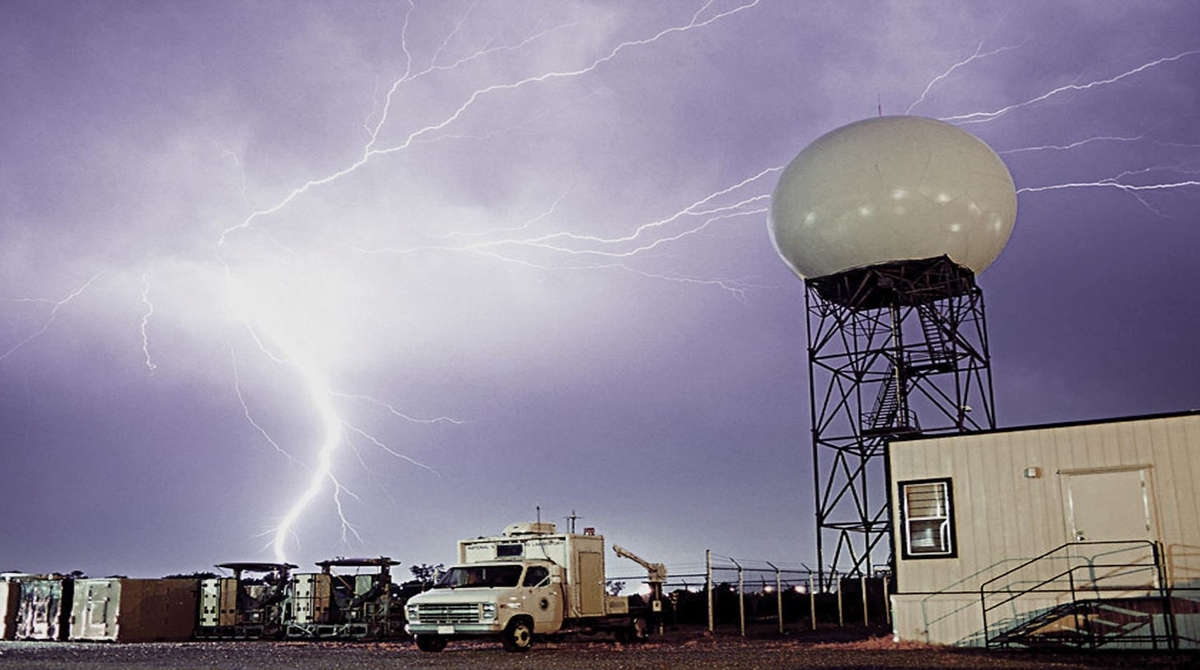
Construction has started to replace the Exeter Weather Radar Station per Lakeshore Times Advance. The $4 million project will replace the entire system by next summer and is part of a larger $93 million project to replace 23 weather stations across the country. This is an initiative by Environment and Climate Change Canada. Click here to see other DataBid environmental projects.
The replacement project is a seven year plan to replace its radar infrastructure with a new modern dual polarization radar system. This new system will cover a much greater area and come up with improved data according to Pat Wong who is a special advisor with the Radar Replacement Program.
Currently, preliminary work such as foundation replacement is being done at the Exeter station which is located about nine kilometers east of Exeter at Thames Road and Hern Line. Everything will be replaced in the spring and summer which would include the tower, radome and the radar system.
The Exeter Weather Radar Station was one of the first in the country and constructed in the mid 1970's. Wong stated that the existing Doppler radar system was installed in 2000 and it was getting to the end of its lifespan. The replacement of this system will give the Exeter station and stations all across Canada the latest in weather radar technology.
The next closest weather radar station is in King City near Toronto. There are eight weather stations in Ontario all together. Canada and the U.S. share data from each country's stations.
Looking for Details on all Current Ontario Projects?
As soon as the new system is installed at the Exeter station, the data gathered will be of the highest quality. The new system will be able to look at precipitation in two dimensions instead of one, which would give meteorologists a better idea of what kind of precipitation they are dealing with. Even objects such as flocks of birds and tornado debris will show up more clearly with the new system.
The range covered by the new system would double from 120 kilometers to 240 kilometers. The Exeter station covers most of Southwestern Ontario.
"They will have a much bigger range to monitor severe weather, which will be really important. It's a higher power radar with better data quality."
Special Advisor with the Radar Replacement Program | Pat Wong
The new radars will also have improved storm penetration and be better able to see through storms close to the radar to the next storm down the road. There will also be an increase in the data collected. There is a data cycle every 10 minutes now and that will increase to a new cycle every six minutes.
Wong said, "That might not sound like a lot, but if you're watching tornadoes developing, it's really important for the meteorologist."
Currently, maintenance and servicing is now required every two months but the new stations would only require servicing every six months.
The new radar station will look the same but will be larger. The tower now is 20 meters tall and the new tower will be nearly two meters taller and the radome on top will be substantially larger. Wong stated that now the radome looks like a baseball but will look more like a soccer ball or a volleyball on top of the tower.
She said she expects the work at the Exeter Weather Radar Station to be done by the end of the summer and a temporary Doppler system will be put in place while the new system is being installed which will probably be in the spring.
The replacement of all 23 weather stations across Canada will be completed in 2023.
Posted by Judy Lamelza









